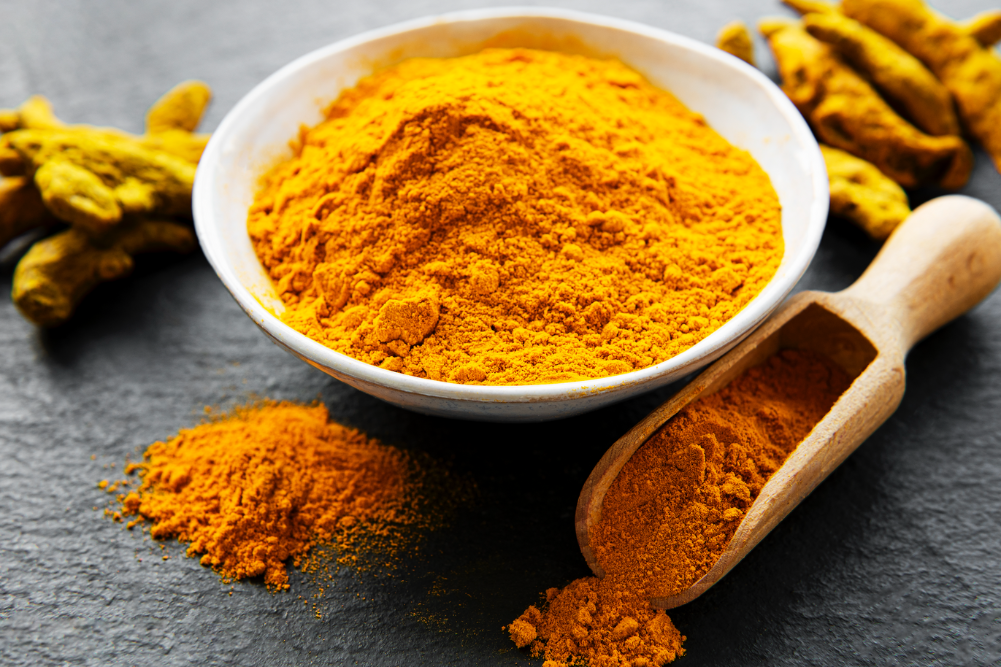Ultimate guide to cooking oils
Scouring shelves for the ideal oil can be confusing. Which oil has abundant essential fatty acids, low rancidity and a high smoke point for cooking? We take you through an ocean of oily options in this ultimate guide to cooking oils to look at the oil you need.
Confusion has abounded as to the benefits and detriments of dietary fat since researcher Ancel Keys presented his diet–lipid–heart disease hypothesis at a 1955 WHO meeting and the 1979 US McGovern report recommended people eat less fat and more carbs. Though curbing fats has been the cornerstone of cardiovascular disease management for decades, compelling evidence contradicts advice to reduce fats, rather advocating moderate healthy fats within a balanced diet. Research also indicates that the main contributors to heart disease are oxidation and inflammation fuelled by hydrogenated oil, refined grains, sugar and processed foods.
While unadulterated fats are essential, adulterated fats are dangerous. Dr Mark Hyman warns, “Our typical Western diet is full of inflammatory fats — saturated fats, trans fats, too many omega-6, inflammatory, processed vegetable oils like soy and corn oils.” Hydrogenated fats are created in an industrial process, adding hydrogen to liquid vegetable oils to make them more solid. They include stick margarine, vegetable shortening, commercial baked goods and fried fast food. Hydrogenated oils have been associated with an increased risk of insulin resistance, metabolic syndrome, type-2 diabetes, inflammation and increased levels of LDL (bad) cholesterol.
However, healthy oils properly prepared are vital for health. Along with each oil’s specific benefits, fats are essential to absorb vitamins A, D, E and K. They also help healthy cell membranes, muscle movement, neural pathways, skin and joint lubrication and cushion organs. According to the Victorian government’s Better Health Channel, omega-3 fatty acids appear to lower blood pressure, improve blood vessel elasticity, facilitate normal heartbeat, thin blood to reduce clots, ease inflammation, support immunity, prevent depression and contribute to a baby’s brain development. Bestselling author of Fats that Heal, Fats that Kill, Udo Erasmus, advises omega-3 for staying warm as “it increases metabolic rate, energy production and heat.”
The oils we eat regularly can make or break our brain and our body. Just as an oil change can make a car run smoothly, eating optimal oils tune us up. To thrive from oils and avoid adverse affects, let’s separate fat from fiction.
Fat facts
Studying oil chemistry can be a slippery subject, but it is helpful to grasp basic concepts. There are four main types of dietary fats — saturated, monounsaturated (omega-9 fatty acids), polyunsaturated (omega-3 and omega-6 fatty acids) and trans-fatty acids.
Natural trans-fatty acids in dairy may be beneficial due to the conjugated linoleic acid content. Artificial trans fats, also known as partially hydrogenated fats, are vegetable oils that are chemically altered to stay solid at room temperature. Trans-fatty acids are also formed when oils are heated at extreme temperatures or reused for frying. WHO and the International Food and Beverage Alliance aim to eradicate trans fats worldwide. According to WHO, industrially produced trans fats have caused over 500,000 deaths from coronary heart disease globally annually. Artificial trans fats are empty calories that can increase bad LDL cholesterol, inflammation, insulin resistance and heart disease. Foods that contain artificial trans fats may include vegetable shortening in baked goods, microwavable popcorn, some margarines, vegetable oils like canola, fried fast food, non-dairy creamers, chips, pies, pizza, frosting and crackers. The best way to avoid eating trans fats is to shun foods with hydrogenated oils while preferring a diet rich in fresh, whole foods with vegetables, fruits, whole grains, legumes and healthy fats.
Polyunsaturated fatty acids (PUFAs) have two or more double bonds in their carbon chain. “Poly” means many and “unsaturated” refers to double bonds. These liquid oils include corn, safflower and sunflower. Health-promoting sources of polyunsaturated fats include salmon, flaxseeds, walnuts and unhydrogenated soybean oil. Scientific studies have found omega-3 and 6 fatty acids can protect against heart disease, decrease inflammation, increase good HDL cholesterol and lower triglycerides.
Monounsaturated fats (MUFAs) are considered health-promoting providing they aren’t overheated. They are generally liquid at room temperature, but harden when chilled. MUFAs include avocado, nut butters, olive oil and peanut oil. They have similar health benefits to PUFAs including lowering LDL cholesterol, reducing heart disease risk, improving blood vessel function, stabilising insulin levels and normalising blood sugar.
Saturated fats have divided nutrition experts for decades. These fats are saturated with hydrogen with single bonded carbon molecules. They include dairy, meat, butter, coconut and palm oil. Though saturated fats can increase both LDL and HDL cholesterol, meta-studies have suggested that saturated fat intake doesn’t increase heart disease. A disproportionate quantity of saturated fat coupled with processed food can contribute to health issues however. A balanced, fresh, wholefood diet with moderate saturated fats can support health in conjunction with a healthy lifestyle. Saturated fats are vital to create cell membranes, bones, protect the liver from toxins, improve immunity and protect against harmful micro-organisms. They also contribute to making cholesterol, which is essential to produce hormones, vitamin D and fat-dissolving bile acids.
Need omegas?
Omega-3 and 6 fatty acids are essential in our diet because we can’t create them. However, you can make omega-9 fatty acids. Omega-3, 6 and 9 are so called according to where double bonds sit on their fatty acid chain. For example, the final double bond in an omega-3 fatty acid occurs three carbons from the chain terminal.
The ideal ratio of omega-3 to omega-6 is around 1:4, but studies suggest that a Western diet can have a ratio as imbalanced as 1:17. A 2008 study published in Experimental Biology and Medicine summarises “a very high omega-6/omega-3 ratio, as is found in today’s Western diets, promote the pathogenesis of many diseases, including cardiovascular disease, cancer and inflammatory and autoimmune diseases, whereas increased levels of omega-3 PUFA (a lower omega-6/omega-3 ratio), exert suppressive effects.”
There are three common omega-3 fats obtained from dietary sources such as algae, chia seeds, flaxseeds, salmon and walnut.
Eicosapentaenoic acid (EPA), originally from microalgae, can reduce depression and inflammation, and docosahexaenoic acid (DHA), found in fish, is vital for the brain. Unfortunately a study published in the May 2016 issue of Progress in Lipid Research revealed that the majority of the world’s population is deficient in DHA and EPA.
Alpha-linolenic acid (ALA), present in plant oils, supports the heart, immunity and nervous system. Though there is a belief that the conversion of vegetarian ALA to omega-3 is poor, Erasmus says, “If you have enough ALA, your body will automatically convert it to what your body requires at the time.” Interestingly, a study of 14,422 people published in the American Journal of Clinical Nutrition discovered that non-fish eaters had higher conversion rates of ALA than fish eaters.
Signs of omega-3 deficiency include allergies, dandruff, dry skin, brittle hair, excessive ear wax, rashes, tiredness, insomnia, poor concentration, memory loss, aching joints, leg cramps, thin nails and painful or prolonged periods. Babies need sufficient omega-3 for healthy eye and brain function. Children with low omega-3 have been shown to be more prone to attention deficit disorder, behavioural problems and depression.
The Western diet is abundant in omega-6 and 9 fatty acids. Omega-6 fatty acids are PUFAs essential for energy and immunity. Linoleic acid is the most common omega-6 fatty acid, abundantly available in flaxseeds. Other omega-6 fatty acids are gamma-linoleic acid (GLA) in borage along with conjugated linoleic acid (CLA) in milk. Excessive omega-6 can increase inflammation, raise blood pressure, cause blood clots, retain water and increase risk of heart attack or stroke. In the form of conjugated linoleic acid (CLA), moderate omega-6s can facilitate fat loss, reduce nerve pain, lower blood pressure, support bones, lower risk of heart disease, reduce ADHD and ease rheumatoid arthritis. Common sources of omega-6 are corn oil, safflower oil, sunflower oil, soybean oil, sunflower seeds, pumpkin seeds and walnuts.
Omega-9 fatty acids are monounsaturated oils produced internally. They may reduce the risk of cardiovascular disease and complement essential fatty acids’ role if taken in the ideal proportion. Omega-9s are found in common oils including avocado and olive.
Liquid gold
Multiple factors affect oil’s quality, according to Dr Selina Wand, research director of the Olive Center at the University of California, who writes, “Chemical changes depend on many variables such as the moisture, acidity, and antioxidant properties of an oil.” Some oils are naturally stable and preserved due to their high antioxidant levels, like sesame oil. Other oils can oxidise and go rancid rapidly, such as vegetable oil. Rancid oil contains free radicals, which contribute to inflammation and cell destruction.
The smoke point of oil is the temperature at which it starts smoking. Scientific studies show overheating oils to their smoking point causes them to generate toxic fumes and free radicals and hydrogenates the oil, destroying nutrients. Erasmus agrees: “When we burn the oils, they burn us. When we fry the oils, they fry our health.”
Olive oil has a low smoke level of 190–207°C, hence it is ideal to cook it on a low heat for minimal duration or enjoy it uncooked. But buyer beware: a CBS report found that up to 70 per cent of the extra-virgin olive oil sold worldwide is mixed with cheaper oils. Ghee, on the other hand, has a high smoke point of 250°C, which is well above the normal cooking temperatures and is higher than most vegetable oils.
To ensure oil remains fresh, smell a bottle every use. Off oil will smell strange, appear cloudy, thicken and potentially contain mould. The more saturated a fat is the less prone it is to become oxidised from light and heat exposure. Ideally store oils in airtight, dark glass or ceramic containers in a cool cupboard or fridge. Plastic or metal containers can alter oil and leach harmful chemicals. Prefer smaller bottles to reduce long-term exposure. To extend oil longevity, consider adding vitamin E oil.
Outstanding oils
Understanding an oil’s flavour, smoke point, consistency and special strengths show us how to apply them for culinary or curative purposes. Prefer oils that are organic, unrefined and cold-pressed. Unrefined oils retain flavour, enzymes and nutrients but may have lower smoke levels. Refined oils are processed through filtering, bleaching or heating to remove volatile compounds that denature virgin oils.
Algal oil
Fortunately, vegetarians can now access abundant omega-3, EPA and DHA from the same place fish source theirs — algae. Research found fish accumulate high levels of omega-3s because of their algae-rich diet. Algal oil also has a very high smoke point of 251°C. Because it’s grown under controlled conditions and purified, algal oil is free from toxins that may be present in fish oils. Its neutral taste and odour are less likely to cause a fishy aftertaste or nausea. Studies support algal oil for reducing triglyceride levels, lowering risk of heart attack and depression and as an eye tonic.
Avocado
Extracted from avocado pulp, this oil is delicious cooked or raw. With the highest smoke point of any plant oil, it’s suitable for cooking. Though the ratio of omega-6 to omega-3 is 12.5:1, it is still considered anti-inflammatory and is prescribed medicinally for arthritis management. Scientific studies have verified avocado oil’s power to decrease LDL cholesterol, reduce blood triglycerides and lower blood pressure. It also contains carotenoid lutein which supports healthy eyes. Avocado’s emollient properties ensure optimal dermal hydration. Avocado’s fungicidal and antibacterial activities are also beneficial for dandruff and dermatitis. Adding avocado oil to salad will increases carotenoid absorption by up to 15.3 times according to a study published in the Journal of Nutrition in March 2005. Purchase pure avocado oil from a trusted source, as a 2020 study at the University of California discovered that the majority of domestic and imported avocado oil was rancid and sometimes 100 per cent soyabean oil.
Smoke point: 250°C for unrefined oil.
Fatty acids: 12 per cent SFAs, 76 per cent MUFAs, 12 per cent omega-6.
Nutrients: Vitamin E, carotenoids, chlorophyll, heart-healthy oleic acid and cholesterol-culling beta-sitosterol.
Borage
This pretty plant’s seed oil is a superstar for inflammatory issues. Clinical evidence supports borage oil’s efficacy for acne, arthritis, breast pain, eczema and menopause. Borage bears the highest gamma-linolenic acid content of any seed oil, which converts to anti-inflammatory prostaglandin E1. Borage oil is best taken raw in capsule form or topically as it has a low smoke point.
Smoke point: 107°C.
Fatty acids: 20–26 per cent gamma-linolenic acid and linolenic acid.
Butter
Hindu art depicting Baby Krishna stealing freshly churned butter convey India’s regard for this sunny spread. Butter’s butyric acid is a powerful anti-inflammatory that has been used to manage Crohn’s disease. The vitamin A and D in butter can boost bone health, increase immunity, aid eyes, promote cell regrowth and support skin. The omega-3 fatty acids in butter also lower the level of omega-6 fatty acids and thereby reduce risk of heart disease. Studies show that organic grass-fed butter is higher in anti-inflammatory omega-3 fatty acids. Natural butter is preferable to margarine, which is chemically refined and potentially hydrogenated and often contains vegetable oils, emulsifiers, preservatives, food acid and flavours. Being primarily saturated fat, butter is great for gaining weight but should be taken in moderation by those suffering obesity.
Smoke point: 150°C for unrefined butter.
Fatty acids: 66 per cent saturated fatty acids; 26 per cent monounsaturated fat; and 3 per cent polyunsaturated fat, linoleic acid (2 per cent) and alpha-linolenic acid (1 per cent).
Nutrients: Vitamins A, D, E, B12 and K2, iodine and selenium.
Coconut
Crowning coconut oil a superfood is an exaggeration, but it does offer wholesome dietary fat. Though this tropical treat is a saturated fat, it contains lauric acid which increases good HDL cholesterol. Coconut also has antifungal, antibacterial and antiviral actions which explains why oil pulling can cleanse oral impurities. Coconut’s medium-chain triglycerides are an easy energy source, feeding the brain-clarifying ketones. A high-ketone diet also reduces epileptic seizures in children according to research reviewed by the Epilepsy Foundation. A daily dose of 30ml of coconut oil reduced abdominal obesity in a 12-week study involving 40 women. Coconut oil is a beauty boon, maintaining hair and skin moisture while preventing protein loss, but with a comedogenic factor of four it isn’t recommended for acne-prone complexions. It’s also an excellent lubricant.
Smoke point: Refined 204 °C, unrefined virgin 177°C.
Fatty acid profile: 92 per cent SFAs, 7 per cent MUFAs, 2 per cent omega-6.
Nutrients: Vitamin E and medium-chain triglycerides.
Flaxseed
Also known as linseed oil, this is the richest plant source of omega-3 fatty acids along with cancer-preventing lignans. The high omega-3 and 6 fatty acids in flaxseed oil are beneficial for inflammation, better brains, healthy hearts and happier moods and may lower cholesterol according to recent research. Studies suggest that taking 1–2 grams of flaxseed per day can improve symptoms of dry eye, and a Canadian study discovered that flaxseed oil prevented breast tumour growth, likely through alpha-linolenic acid (ALA) content. Flaxseed oil is great as a gentle laxative. It also supports shiny hair and hydrated skin and even assists weight loss, according to a 2015 study published in the Nutrition Journal. Conversion of ALA to EPA and DHA depends on gender, smoking, digestion and diet. Many prefer fish oil for their omega-6, but fatty acids in fish are about five times easier to damage with heat, light and oxygen than ALA. With its low smoke point of 107°C, flaxseed oil shouldn’t be heated.
Ghee
Ayurveda exalts this golden elixir as the healthiest edible fat. A study published in The International Quarterly Journal of Research indicated that medicated ghee decreases serum cholesterol, triglycerides, phospholipids and cholesterol esters.
Though clarified butter has the same fat content as butter, it lacks lactose and protein. This also gives ghee a high smoke level, safe even for deep-frying. Ayurveda utilises ghee for eye health, memory, digestion, flexibility, rejuvenation and virility. Ghee is a good source of DHA, which can reduce the risk of ADHD, arthritis, cancer, heart disease and insulin resistance. Butyric acid in ghee along with vitamins A, D, E and K boost immunity and gut health, strengthens bones and improves eyes. Traditionally prepared ghee from fermented butter contains more phospholipids and DHA than industrial methods of making ghee.
Fatty acid profile: 68 per cent SFAs, 28 per cent MUFAs, 4 per cent PUFAs (1 per cent omega-3, 3 per cent omega-6).
Smoke point: 250°C.
Hemp
Free from THC or CBD, hemp oil won’t make you high but it may make you healthy. Hemp is dubbed “nature’s perfectly balanced oil”, due to containing an excellent 1:3 ratio of omega-3 to omega-6 fatty acid. Hemp seed oil also has the highest plant source of polyunsaturated fatty acids at around 80 per cent. The GLA in hemp seed oil has been shown to assist ADHD, diabetes, heart disease, high blood pressure, PMT, rheumatoid arthritis and skin allergies. Nutrients in hemp help healthy eyes, support skin, are cardio-protective and constitute an antioxidant for cellular rejuvenation. Studies suggest that the GLA found in hemp seed oil has a direct modulating effect on prolactin, hence it may help painful breasts and menopausal issues. Hemp’s anti-inflammatory fatty acids can ease eczema, dermatitis and psoriasis. Considering hemp’s low smoke point of 165°C it is best not to heat it.
Fatty acid profile: 80 per cent as polyunsaturated fat, including omega-6 fatty acids such as linoleic acid (LA 54 per cent) and gamma-linolenic acid (GLA 3 per cent), and omega-3 fatty acids such as alpha-linolenic acid (ALA 17 per cent) and stearidonic acid (2 per cent), 5 per cent to 11 per cent monounsaturated fat and 5 per cent to 7 per cent saturated fat.
Nutrients: Vitamins A, C, E, phytosterols and phospholipids.
Krill
Krill oil comes from cute crustaceans. Though more expensive than fish oil, krill may be worth it as a study demonstrated krill oil’s EPA and DHA phospholipids have a 121 per cent higher absorption compared to fish oil triglycerides. It has also proven to be more effective than fish oil at lowering blood sugar, triglycerides and “bad” LDL cholesterol. Krill is packed with powerful antioxidant astaxanthin for skin, eye and cellular health. Some feel krill is purer because it is at the bottom of the food chain. Krill’s choline-containing phospholipids and phosphatidylcholine reduce homocysteine, which is linked to heart disease. Be sure to look for a krill oil that is sustainably sourced, with WWF (World Wide Fund for Nature) protocols in place.
Please consult your qualified healthcare provider before commencing new supplements or altering your medication.
Caroline Robertson has dedicated decades to natural therapies. She practices as a qualified naturopath, homeopath, remedial masseuse and first aid trainer. For online or in-person consultations or treatments see carolinerobertson.com.au.








